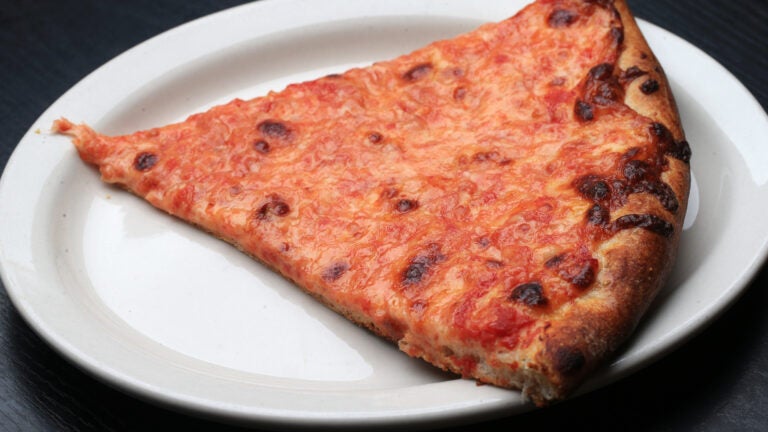Food
There’s New York, New Haven, Trenton, and Chicago-style pies. Why not Boston?
Make any turn in Greater Boston, and you’re bound to stumble upon a pizzeria. It could be a slice shop, an old-school pizzeria that serves meals on paper plates, the trending Detroit-style, blackened wood-fired pies, and the list goes on.
Boston — like New York, Chicago, New Haven, and Trenton — can thank its presence of pizza and other Italian foods on the influx of Italian immigrants in the late 19th century and early 20th century. But unlike those other cities, where well-known pizza styles exist and are a large part of their food identities, Boston doesn’t seem to have a namesake pizza.
According to one unofficial pizza expert, Colin Caplan, who has spent decades eating and researching pizza, he thinks credit is due for what could have been Old Boston-style pizza.
“There are more connections here in Boston with other old pizza cities relating to the old style of pizzas that can still be found in the handful of vintage Boston-area pizzerias,” Caplan, who is based out of New Haven, said in an email.
He used Regina Pizzeria and Santarpio’s as examples, two famous pizzerias that have been around since 1926 and 1903, respectively, Caplan said you’ll find a mix of techniques used to make pizza, similar to the way Italian immigrants made pizza in New Haven, New York before it became a slice city, and Trenton. The pizza had thin crust, was hearth-baked, and served by the pie rather than by the slice.
Santarpio’s also uniquely prepares its pizza “upside down,” which means that the cheese and toppings are cooked underneath the tomato sauce, which is similar to the Trenton tomato pie. Casa Pizzeria in Ludlow gives a nod to an old Boston pizzeria with its “Bostonian upside down crust” and the “Old Fashion pizza.” Its description reads: “Inspired by a legendary Boston pizzeria who makes pizza with the cheese on the bottom, and splashes of red sauce for a unique blend.”
So why didn’t a Boston-style pizza become anything?
What are other regional pizza styles?
There were other foods that gained more of a reputation in Boston, like clam chowder, baked beans, Boston cream pie, and even other types of pizza.
“There has not been as linear of a story [in Boston] as some other well-known pizza cities like Chicago, New York City, and New Haven,” Caplan said.
For example, a different style of pizza emerged in the 1950s from Greek immigrants. The pizza at a House of Pizza is typically cooked in a pan, it has a thicker crust, and the choice of cheese is usually cheddar.
To some pizza eaters, it could be considered Boston’s pizza, though Caplan said it’s really a New England regional pie. In fact, the first House of Pizza appears to have opened in Connecticut.
South of Boston, another pizza style reportedly cropped up out of Brockton now known as South Shore bar pizza. The pie is cooked in a 10-inch pan, it uses a mix of mozzarella and cheddar, has thin and crispy crust, and with burnt edges. Scott Riebling, one of the founders of Stoked Pizza, said if Boston actually has a type of pizza, bar pizza would be the only thing that would count — even though bar pizza in Boston proper is almost non-existent.
“South Shore bar pizza is totally unique,” Riebling said. “There’s nothing else like it anywhere.”
‘Could we coin the phrase now?’
Then there’s the fact that pizza — or food in general — doesn’t get automatically named a word or phrase.
Caplan said coining pizza styles only became popular in the mid-20th century.
“A style of pizza cannot be created,” said Scott Wiener, founder of Scott’s Pizza Tours in New York. “A style of pizza is identified by somebody from the outside. New York-style pizza was not something New Yorkers ever called New York-style pizza.”

There is evidence of “Boston-style pizza” being used to describe a business’ pizza. Caplan shared a 1952 advertisement published in the Fitchburg Sentinel from the Marconi Club, which invited customers to “try our Boston-style pizza.” Canada also has a popular restaurant chain called Boston Pizza, though an email to the company asking why it was named after the Massachusetts city went unanswered; according to a Vancouver news outlet, the chain was sued by Boston Market, with one of the claims in the suit stating that the name “Boston Pizza” could not be trademarked because it’s a style of pizza from a specific region.
The Wikipedia page for Santarpio’s in East Boston said that the iconic pizzeria is known for Boston-style pizza. But when asked to describe the kind of pizza made at Santarpio’s, owner Joia Santarpio said she’s never even heard of “Boston-style pizza.”
“Could we coin the phrase and market it 1739390262?” Santarpio joked.
Mark Murphy, Regina Pizzeria’s executive chef, also said he doesn’t know what “Boston-style pizza” is, and when asked to describe Regina’s pizza, he simply said: “We’re Regina’s.”
Maybe Boston will never know what it’s like to have a namesake pizza, but Caplan said it’s this kind of pizza culture and history that make Boston a notable pizza city, regardless of coined names.
“People have passed over Boston as a pizza city, but there are these historic pizzerias that are still making a quality, old-school recipe,” Caplan said. “It developed separately from any other city.”
Sign up for The Dish
Stay up to date on the latest food and drink news from Boston.com.





:max_bytes(150000):strip_icc()/20250206-SteakDiane-AmandaSuarez-19-f223095aedcb44ae873a7c20efc2f8d0.jpg)










